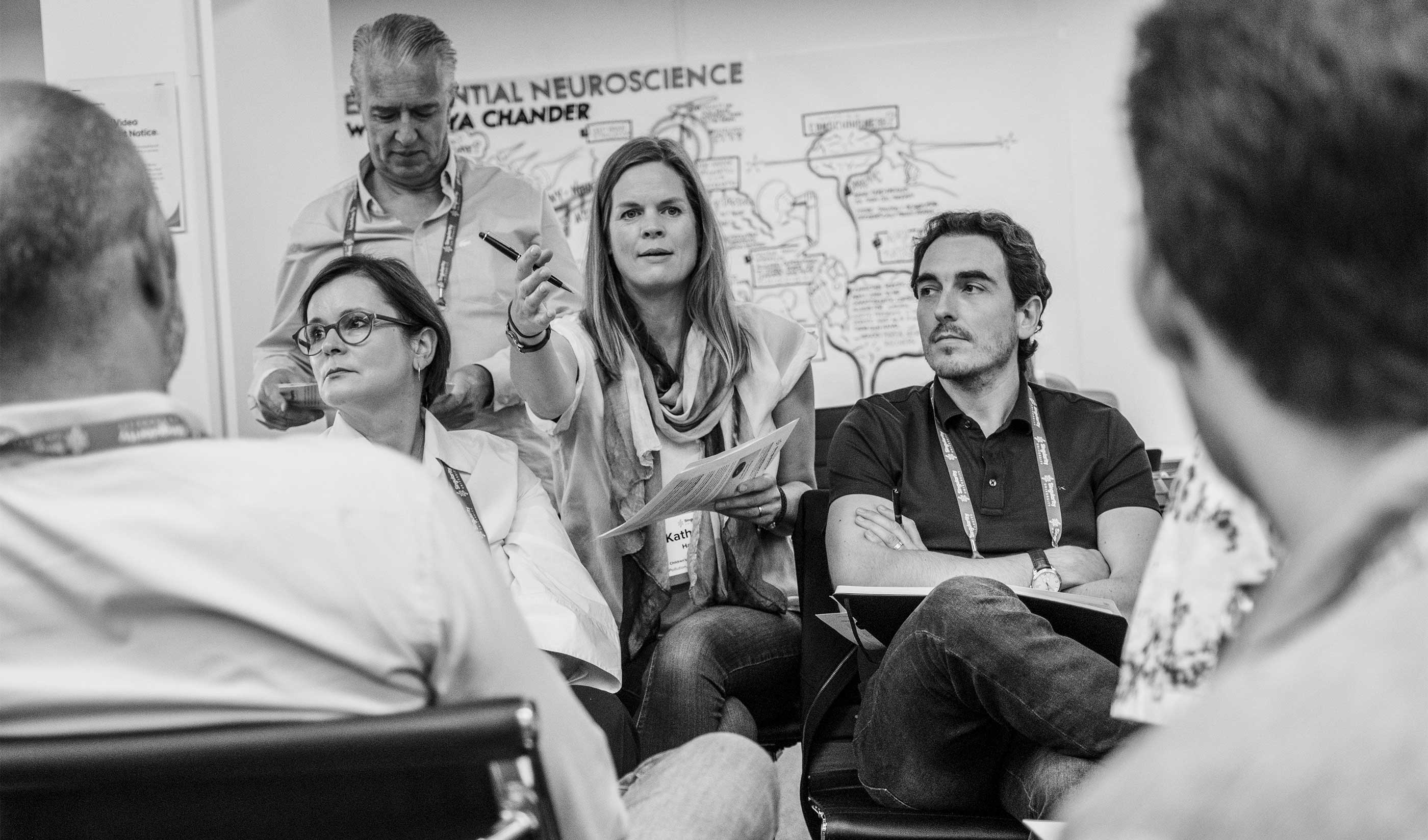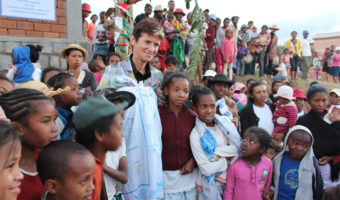The quintessential image of the polar bear balancing on a melting ice cap has become an out-of-touch and outdated image of climate change. It presents it as a foreign issue: one that affects other species in other places. In contrast, air pollution has a devastating impact on health in a more immediate and local way. With common solutions to both pollution and climate, perhaps our health – and particularly the health of our children – can be the catalyst we urgently need to accelerate our shift to a net-zero world.
At the Children’s Investment Fund Foundation (CIFF), we are one of the largest philanthropic foundations supporting ambitious work on climate change. For us, intergenerational injustice is central to why we – a philanthropy focused on children – invest so heavily in climate. The long-run negative impacts of climate change on health have been clearly stated; it is now ten years since The Lancet described climate change as ‘the biggest global health threat of the 21st Century’ (Costello et al., 2009).
The links between climate breakdown and health – especially the health of our children – are as extensive as they are worrying. We know that climate change will cause patterns of communicable diseases to shift, undermining efforts to eradicate deadly diseases like malaria and dengue fever (Patz et al., 2003). At the same time, some of the most productive tracts of agricultural land risk becoming harder to cultivate, with worrying implications for food security. The links between a warmer planet and frequency and severity of extreme weather events are compelling, as is the likelihood that this leads to mass displacement and unrest. Yet, despite this, global CO2 emissions continue to rise (Harvey, 2018).
Why linking climate change and child health around toxic air makes sense
Collectively, we’re failing to address climate change, but addressing air pollution can help to change this. The reasons for this collective failure are complicated, but part of it comes down to human psychology. The risk of climate change can feel too big for one person to deal with, too long-term to seem a real problem for us today. Compare this to air pollution. Toxic air couldn’t be more proximal: it enters our lungs, stings our eyes and makes us wheeze.
Some of the impacts, like the way that lung cancer is transforming from a smokers’ disease to an urban one, can take years to manifest. Others can be far more immediate, undermining health today.
This was vividly illustrated by the tragic case of 9-year-old Ella Kissi-Debrah, who tragically died after a fatal asthma attack that occurred during a period of illegally high levels of air pollution. Ella lived within 25 metres of one of London’s most polluted roads. Over a period of three years, she was admitted to hospital with breathing difficulties 27 times, with all but one visit coinciding with peaks in air pollution levels. As with climate change, children like Ella are at the greatest risk from air pollution, and especially the youngest, whose brains and lungs are developing most rapidly.
Fortunately, the sources of air pollution are very often also the sources of greenhouse gases: transport, power and heavy industry. Energy production – the main driver of greenhouse gas emissions through the burning of fossil fuels – causes 85% of airborne particulate pollution and almost 100% of sulphur and nitrogen oxide emissions (International Energy Agency, 2016).
The solutions to climate and air pollution, therefore, are often the same. By tackling one, we can tackle both. At CIFF, we are building partnerships to bring together the issues of child health and the environment. We’re already seeing how bridging communities of academics, activists and policymakers can accelerate positive change.
Air pollution has a devastating impact on children, but receives insufficient attention
As readers of Early Childhood Matters will be acutely aware, early childhood lays the foundation for later life, impacting learning, earning and happiness. However, despite the compelling evidence, the health of babies and toddlers continues to be neglected by donors and governments globally.
The impact of air pollution on health starts from the moment of conception. Toxins inhaled by the mother travel through the placenta and undermine foetal development (Fleischer et al., 2014). Then the damage continues after birth: young lungs breathe two to three times faster than adults and are often closer to the ground where air pollution is more concentrated (Sharma and Kumar, 2018). Adverse health impacts range from neurodevelopmental disorders to asthma and childhood cancers.
The latest research from the World Health Organization (WHO, 2018) on linkages between air pollution and child health (as summarised on pages 138–141 of this issue of Early Childhood Matters) makes for depressing reading: for example, air pollution accounts for almost one in ten deaths in children under 5 years old, and 98% of children under 5 in low- and middle-income countries are breathing PM2.5 levels above WHO guidelines. As stated by WHO Director-General Tedros Adhanom Ghebreyesus: ‘polluted air is poisoning millions of children and ruining their lives. This is inexcusable.’
Like climate change, air pollution is an issue which continues to receive insufficient attention – although it is heartening that María Fernanda Espinosa is making this a signature issue for the United Nations General Assembly (see her article on pages 10–13). Environmental health is often seen as a sub- speciality rather than core to child public health. Critical conversations about transport policy and town planning occur largely without health expertise and inputs. Consequently, it is only very recently that the issue has been given the prominence it deserves.
Child health brings a new face and new resources to climate change
The physical proximity and visible urgency of air pollution help to bring attention and create common ground on which we can all agree. After all, who is not concerned about rising asthma in urban children (Asthma UK, 2018), or the toxic air which at times forces Delhi schools to shut? This can shift the debate from being about whether to act, to how to act. At the same time, child health brings new, trusted voices to the debate, including doctors, influential and engaged parents, and a new community of academics.
In addition, strong and growing activist movements, which have helped to shape the climate debate, have a lot to bring to the at times overly technical and cautious public health community. Linked to this is the application of tools like litigation, power mapping and political economy analysis, and strategic communications which are, if not new, certainly underused in public health.
We hope that emphasising the overlap between child health now and climate change over the long term can unlock greater resources, particularly from philanthropy.
‘With the Clean Air Fund, we hope to build stronger allegiances with diverse funders to accelerate action.’
Climate change has for too long been far down the priority list of philanthropists. For US and UK foundations, it is estimated that less than 2% of philanthropic funding is spent on climate change (Alliance Magazine, 2016), whereas health is undeniably a greater focus for traditional philanthropy. By making the links between climate change and health clearer – starting with air pollution – we hope to start to leverage new funders to environmental risks in order to deliver the win–win of improved health and accelerated decarbonisation.
In light of this, CIFF are supporting the Clean Air Fund, a transformational new philanthropic fund which is raising USD 100 million to tackle air pollution for the good of our children, our health and the climate globally (see box). We hope to build stronger allegiances with diverse funders to accelerate action and see real change in the short term.
The child health community must act on the very real and current threat that air pollution and climate bring to children’s health. We can do much more: pushing for greater awareness of air pollution in our urban planning. We can support institutions like the WHO that are putting considerable effort into tackling climate and environmental determinants of health. We can use the voice of our children to uplift ambition through existing climate channels, such as the global COP conferences. And we can work locally too: with parents, schools, nurseries and children to raise awareness and motivate stronger action within communities.
Our children will not forgive us if we fail to prevent climate breakdown. If the predicted – if still hard to imagine – impending planetary crisis comes to fruition, they’ll be right not to. Poisoning our babies and toddlers by treating the air we breathe as an open sewer is equally unforgivable. The problem of toxic air pollution can inspire action in a way that the threat of climate breakdown so far has not. The solutions to both problems overlap considerably, which is why we need to replace the polar bear – the traditional face of climate change – with the face of a child.
The Clean Air Fund
Foundations focused on children, health and climate change are working together to establish a joint initiative called the Clean Air Fund to address the urgent need for greater collective action. By tackling air pollution together, significant improvements can be made in the short term to human health and accelerated decarbonisation.
The Clean Air Fund will pool and deploy philanthropic resources to:
-
- make grants to charitable projects, deploying philanthropic capital and supporting the deployment of capital from others (e.g. development agencies)
- increase the scale of funding currently targeted towards this issue, by tying together resources from funders interested in climate change, environment and health
- ensure a holistic approach across delivery organisations, by integrating expertise from different sectors, sharing best practice and connecting partners
- lead a collective philanthropic strategy to ensure that interventions are made where philanthropic funding can have the biggest impact, to align resources with other programmes and to reduce duplication.
References can be found in the PDF version of the article.



